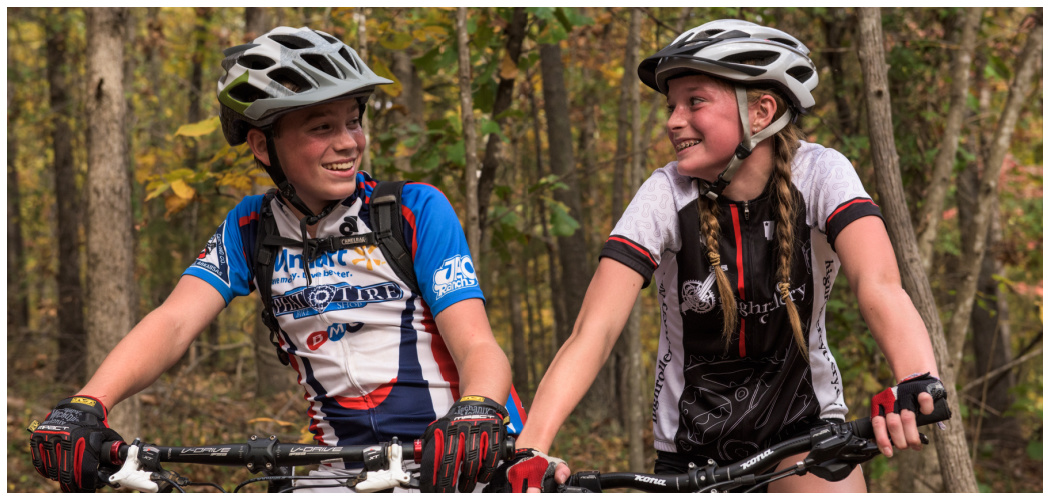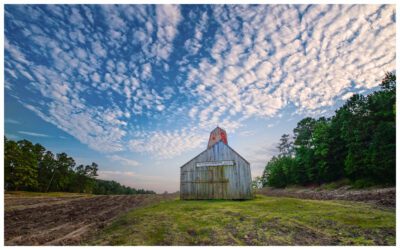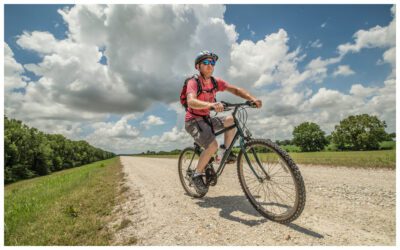[title subtitle=”WORDS Scott Faldon
IMAGES courtesy Arkansas Department of Tourism, Ashley Hout, and Holly Morgan”][/title]
Fall is the perfect time to get into mountain biking. While those words might cause you to imagine people speeding downhill at breakneck speeds or jumping off dirt ramps like a gravity powered Evel Knievel, the sport has many levels, and our region has hundreds of miles of trails to accommodate cyclists of all skill and bravery levels.
“The number one thing for beginners is to know their limits and the limits of their bike. You don’t want a beginner to go out there and start on a black diamond (expert) rated trail,” Scott Chapman, The Woodsman Company’s cycling manager, said. “Plus, you don’t want somebody to take a bike that isn’t capable of performing on a trail like that off four- or five-foot drops.”
While the number and styles of mountain bikes can be overwhelming, Scott said beginners should focus on a basic model that only has front suspension (aka a hardtail). As they advance their skills and begin tackling more challenging trails, then they can consider moving to a full suspension bike that has shock absorbers for both the front and rear wheel.
The number and variations of bikes can be overwhelming to a novice. That’s where the staff of your local bike shop comes into play. “The first thing I ask is what kind of riding they will be doing,” Scott said. “Do they want to ride mild trails or maybe dirt roads or do they want to go off jumps or race? That plays into the type of bike that will suit them best.” A hardtail bike like a Cannondale Trail 8, Giant Talon 4, Liv Tempt or Rocky Mountain Fusion 10 are designed for beginner or casual mountain bikers. After the bike, safety equipment is the next. A good helmet designed for mountain biking will offer more protection than a similar one intended for use on the road.
Scott also recommends gloves to improve your grip and a hydration pack like those from CamelBak or Osprey. “A lot of people use water bottles when they’re riding, but just remember everything you ride through gets thrown off your tire directly at your water bottle,” Scott said. “I’d rather not drink out of a muddy mouthpiece, so I prefer a hydration pack.” A hydration pack also has enough room for a small emergency kit which should include a CO2 inflator or hand pump, a spare tube or two, tire levers, a small first aid kit and perhaps some snacks if it’s a long ride.
Once you’re outfitted, practice a few basic skills in an open space like a parking lot or a quiet street. For starters, always look at where you want to go – not at the tree, rock, or other hazard you’re trying to avoid. The bike will go where you look, so maintain a focus fifteen feet or so in front of your bike and pick the best line.
There are two main body positions in mountain biking – neutral and ready. In the neutral position, you’re more upright with just a slight bend in the knees and elbows and at least two fingers on the brake levers.
When you get into more technical terrain (steeper or with roots and rocks), it’s time to shift into the ready position. You’ll lower your hips and slide backwards a bit. Flex your knees and elbows need more (think 90-degrees for your elbows) and lower your chest toward the handlebars.
When it’s time to brake, do it gently. Grabbing a handful of the front brake will send you over the handlebars. Remember, momentum will carry you over small obstacles. Figuring out the right mix of braking and momentum is the first step to becoming a good mountain biker.
Practice shifting until it’s drilled into your muscle memory. Shift to an easier gear before you start climbing that hill – not in the middle of it or you’ll be pushing your bike to the top.
Falls are going to happen – especially as you try to expand your skills on more challenging trails. Keep your hands and arms tight to your body and try to land on a shoulder.
After some practice, you’re ready to hit a trail. Springhill Park’s 9.4-mile trail and Parker Loop (1.8 miles) at Ben Geren Regional Park are the best nearby trails for beginners. From there, Devil’s Den State Park is the ancestral home of mountain biking in Arkansas. The entire Fayetteville to Bella Vista corridor is now world famous for the hundreds of miles of mountain bike trails that have been built in the past few years.
“They’ve built hundreds and hundreds of miles of trails up there, but I’m partial to Devil’s Den,” Scott said. “That’s really where mountain biking started in Arkansas in the 1980s and I’ve ridden hundreds of miles there. You can’t beat it.”
Planning your next outdoor adventure?
Visit The Woodsman Company in Fort Smith, Arkansas for all your adventure needs!
5609 Rogers Avenue, Fort Smith, Arkansas
479.452.3559|
thewoodsmancompany.com




